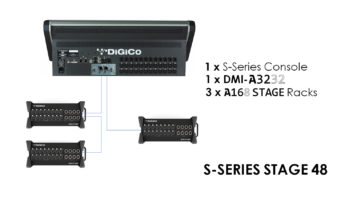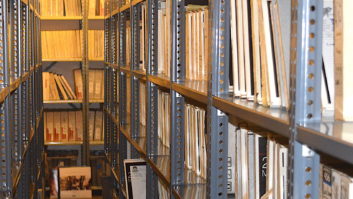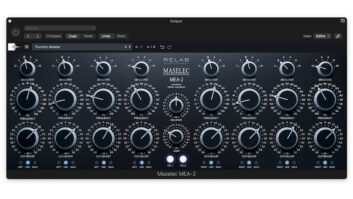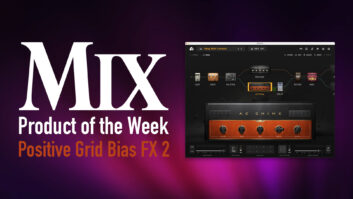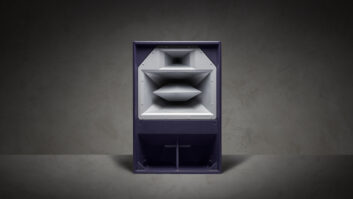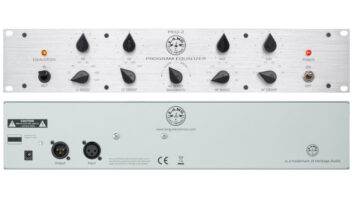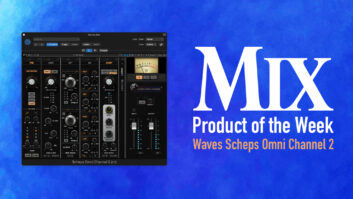With the death of Prince in late April, 2016, the music world lost a genius who was equally adept on stage, in the studio and behind a console. While it’s well documented that he spent hours upon hours in the studio to perfect his music, it’s less well-known that he was often equally obsessed with trying to match that level of control of his aural presentation live as well; the following Pro Sound News tour profile from our March, 2011 issue highlights some of those efforts from one of his later productions.
Prince already had Madison Square Garden in the palm of his hand when he gave the crowd a sly grin and broke into “1999,” a smash that many in attendance probably hadn’t heard since at least that date. Back at the turn of the Millennium, it seemed the song had run its natural course, hitting an obvious expiration date when the years suddenly had the number 2 in front of them.
As the audience’s cheering confirmed, however, after an 11-year absence from the public consciousness, the song’s slinky funk not only sounded fresh, but the familiar chorus of “Tonight we’re gonna party like it’s 1999” had a newfound relevance. Once upon a time, it was about coming nuclear Armageddon, but sung years later, only three miles from the site of the 9/11 terrorist attacks, it was impossible not to think of how much darker the world has become—and suddenly partying like 1999 started to sound like a damn good idea. It was no longer a nostalgia trip, but an invitation—and 20,000 people in the room gladly took Prince up on it.
It’s fair to say that reviving the signature hit may have gone against conventional wisdom, as did making it the second song of the night instead of saving it for the encore—but even then, which encore would it have been? Prince took three. There’s no denying that the artist is unconventional—heck, it’s a big part of his appeal—and that fact permeates every aspect of his concerts, down to the live sound.
Clair is providing sound for the current “Welcome 2 America” arena tour, which kicked off with six in-the-round shows over two months in the New York City area, four of them at the Garden. During that time, the audio system kept evolving, so as a result, this article only discusses the system on hand at the final MSG show. [True to mercurial form, Prince soon switched audio providers mid-tour, finishing the tour with Camarillo, CA-based Rat Sound –Clive]
Some things stayed consistent for the run, however; for starters, there wasn’t a monitor desk. All house PA, wedges and personal monitors were run off the same Midas Heritage 3000 console overseen by band engineer Malki Madjid and his assistant, Fred Lucas. The French-speaking audio pros were familiar with the unusual arrangement, having tackled it last year on two European tours with the artist; now they were in New York to do it again. Welcome 2 America indeed.
All house PA, wedges and personal monitors were run off the same Midas Heritage 3000 console overseen by band engineer Malki Madjid (left) and his assistant, Fred Lucas.

“Prince does not want a monitor console,” explained Lucas. “He wants to have a front-of-house sound on stage, so all about are wedges and sidefills—they’re just the house sound, so we have to be sure that the color of the sound [in] the wedges sounds exactly as the PA. Otherwise, when you have a kick that sounds great in the PA, it sucks when it arrives in the wedges. If we really want him to know what’s happening, we have to match FOH, wedges and in-ears all the time.”
Of course, making that happen wasn’t as simple as pumping the house mix into the Clair 12AM wedges, i-Dl sidefills and JH Audio personal monitors; subtle variations were required across the board, Lucas explained: “When the bass player is next to the drums, the drums are really hot. If she wants to hear the keyboards and vocals, if you push the full mix, it just makes the drums louder in the wedge [when] it needs less, so in that wedge, [we ’re] pushing the rest of the mix. We’re trying to keep it that every musicians hears the FOH [mix represented] wherever they are.”
Given the circumstances, the effects on hand, including a TC Electronic System 6000 and Eventide Harmonizer H3500, were used sparingly. Madjid explained that Prince called the shots on which effects were used in order to best match what he’d originally done in the studio: “We try to add the same effect like they have done, but it’s not easy. For example, in ‘Cream,’ the drums are very many attack on the kick and snare. We do that on the kick, but not on the snare, because Prince [gets] that in the monitors as something more clear…. All the effects are chosen by Prince, and we try to [match] it exactly the same like he wants.”
Along with the fact that dozens of wedges were laid around the in-the-round stage, there was also the unusual factor of the stage itself, which was no mere circle; instead, Prince and eight members of the New Power Generation performed atop a giant rendition of his iconic symbol. In the resulting pockets around the stage were club-like VIP sections, complete with stools and drink tables, which were further surrounded by floor seats and then the stands. The intent was for the VIP areas to have a club-like atmosphere, but getting that kind of sound pressure to play nicely with the overhead PA system and its reflections, not to mention the wedges’ audio as well, was no easy task.
“Having a system down on the floor for the VIP seating was a big part of what Prince wanted,” confirmed Jim Ragus, crew chief, “so we wound up with blocks of six Clair BT-218 subs that conformed to the shape of the stage. If you imagine his symbol, there were six on each side down at the point, six on each of the offshoots, which wound up being stage left and stage right, and 12 around the top, round part of the symbol, for a total of 36 subs. Placed on top of them were our R4s, which are half an S4 basically—very large, not just a little front-fill cabinet—so it wound up a thumpin’ little rig down on the floor.”
Since there were no provisions for the wedges to be hung beneath the stage, they were instead placed pointing inwards atop the floor combos that faced out toward the crowd. Ragus explained, “The floor system, which was powered by our new Clair StakRaks [custom networked Lab.gruppen PLM series amp racks], was basically the height of the stage all around the symbol, so although it was a fight to get the wedges there, it looked awesome.”
Above the stage, the Crown-powered flown PA was comprised of six Clair i5 line array hangs that arced out at 60 degrees apart for a perfect circle. “The fact that the floor system wasn’t equidistant off the circle above theoretically should’ve been an issue,” said Ragus, “but because the systems were so very different, we treated them differently. While we EQ’d and tuned the floor system like a club, the top rig sounded great after a typical tuning. Delay points to the subs were never going to be exact because the subs weren’t equidistant around the stage, but it wasn’t an issue. I walked the room quite a bit and I didn’t notice any time smear, to tell the truth.”
Prince famously mixed the house himself while performing back in the ’90s in order to ensure his aural vision was getting across to the audience; these days, he leaves that task to his engineers, but still has a pair of trusted ears out in the crowd for quality control: musical director/organist Morris Hayes, who had his own mini stage in the FOH mix area near the top of the symbol stage (it’s worth mentioning that despite the delay, he nailed everything perfectly).
In-the-round concerts have always been tricky when it comes to handling the sound; every engineer and artist has his own take on the best way to tackle the issue. As Ragus pointed out, however, “The end result has to be what we gauge ourselves and what measure the results by, and whatever Prince does, it seems to work. The guy’s incredible, and if his dealings with sound are off-textbook, look—the end result is stunning.”
